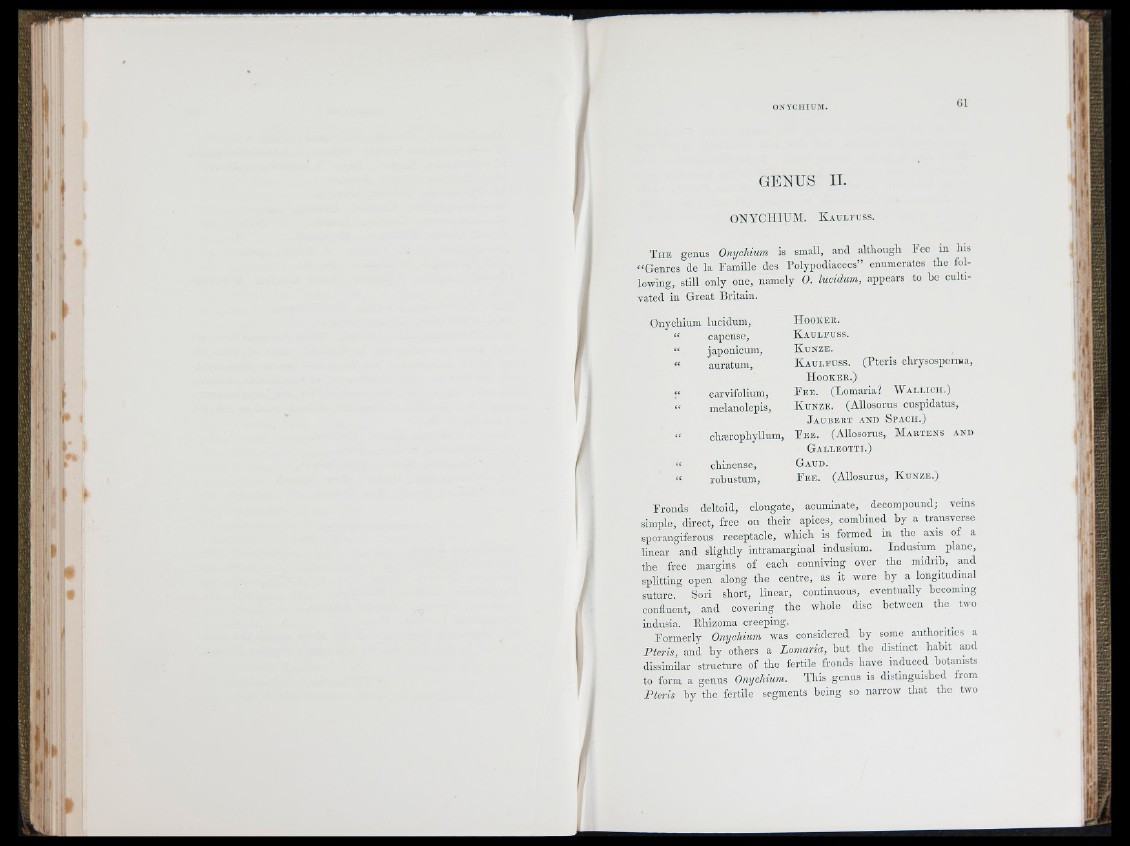
O N Y CH IUM. ()1
H
lí
ill
GENUtí U.
O N Y C H I U M . K a u l i -u s s .
Ï I I E genus Onychium is small, and although I c e in lus
“ Genies de la Famille des Polypodlacecs” enumerates the following,
still only one, namely 0 . lucidum, appears to he cultivated
in G re a t Britain.
Onychium lucidum,
“ capense,
“ japonicuin,
“ auratum,
“ carvifolium,
“ melanolepis,
“ chærophylliim,
“ chineuse,
“ rohustum.
H o o k e r .
K a u l f u s s .
K u n z e .
K a u l f u s s . (P te ris chrysosperma,
H o o k e r . )
F e b . (Lomaria? W a l l i c i i . )
K u n z e . (Allosorus ouspidatus,
J a u b e r t a n d S p a c i i . )
F e e . (Allosorus, M a r t e n s a n d
G a l l e o t t i . )
G a u d .
F e b . (Allosurus, K u n z e . )
F ro n d s deltoid, elongate, acuminate, decompound; veins
simple, direct, free on th e ir apices, combined by a transverse
sporangiferous receptacle, which is formed in the axis of a
linear and slightly in trama rginal indusium. In d u sium plane,
the free margins of each conniving over the midrib, and
splitting open along the c entre, as it were b y a longitudinal
suture. Sori short, linear, continuous, eventually becoming
confluent, and covering the whole disc between th e two
indiisla. Rhizoma creeping. _
Forme rly Onychium was considered by some authorHics a
P te r is , and b y others a L om a ria , b u t the distinct liahit and
dissimilar stru c tu re of the fertile fronds have indu c ed botanists
to form a genus Onychium. This genus is distinguished from
P te ris b y the fertile segments being so narrow th a t the two
: !